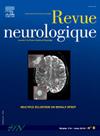Artificial intelligence applied to electroencephalography in epilepsy
IF 2.3
4区 医学
Q2 CLINICAL NEUROLOGY
引用次数: 0
Abstract
Artificial intelligence (AI) is progressively transforming all fields of medicine, promising substantial changes in clinical practice. In the context of epilepsy, electroencephalography (EEG), a technique used for over a century, has historically been resistant to automated analysis due to the complexity of the signals and the challenges posed by artifact management. While the human eye excels at recognizing patterns, algorithms have demonstrated superior capabilities in detecting and characterizing specific features, such as long-term dynamics and synchrony. Furthermore, the advent of wearable EEG devices has led to an exponential increase in data volume, surpassing the limits of visual interpretation. AI algorithms are now being developed to address these limitations, offering enhanced efficiency in both identifying subtle signal features and managing massive datasets. This review explores the fundamental principles of AI and its transformative potential in the field of EEG. It discusses the implications and the current limitations, including improvements limited to aggregation of already known knowledge, for epilepsy diagnosis, medical and surgical treatment, and innovative approaches to patient monitoring, including seizure forecasting, highlighting how AI is poised to redefine the management of epilepsy.
人工智能在癫痫脑电图中的应用。
人工智能(AI)正在逐步改变医学的各个领域,有望给临床实践带来巨大变化。在癫痫方面,脑电图(EEG)是一种已使用了一个多世纪的技术,由于信号的复杂性和伪影管理带来的挑战,该技术在历史上一直无法进行自动分析。虽然人眼擅长识别模式,但算法在检测和描述特定特征(如长期动态和同步性)方面已显示出卓越的能力。此外,可穿戴脑电图设备的出现导致数据量呈指数级增长,超越了视觉解读的极限。目前正在开发人工智能算法来解决这些局限性,从而提高识别微妙信号特征和管理海量数据集的效率。本综述探讨了人工智能的基本原理及其在脑电图领域的变革潜力。它讨论了人工智能对癫痫诊断、医疗和手术治疗的影响和目前的局限性(包括仅限于汇总已知知识的改进),以及患者监测的创新方法(包括癫痫发作预测),重点介绍了人工智能将如何重新定义癫痫的管理。
本文章由计算机程序翻译,如有差异,请以英文原文为准。
求助全文
约1分钟内获得全文
求助全文
来源期刊

Revue neurologique
医学-临床神经学
CiteScore
4.80
自引率
0.00%
发文量
598
审稿时长
55 days
期刊介绍:
The first issue of the Revue Neurologique, featuring an original article by Jean-Martin Charcot, was published on February 28th, 1893. Six years later, the French Society of Neurology (SFN) adopted this journal as its official publication in the year of its foundation, 1899.
The Revue Neurologique was published throughout the 20th century without interruption and is indexed in all international databases (including Current Contents, Pubmed, Scopus). Ten annual issues provide original peer-reviewed clinical and research articles, and review articles giving up-to-date insights in all areas of neurology. The Revue Neurologique also publishes guidelines and recommendations.
The Revue Neurologique publishes original articles, brief reports, general reviews, editorials, and letters to the editor as well as correspondence concerning articles previously published in the journal in the correspondence column.
 求助内容:
求助内容: 应助结果提醒方式:
应助结果提醒方式:


